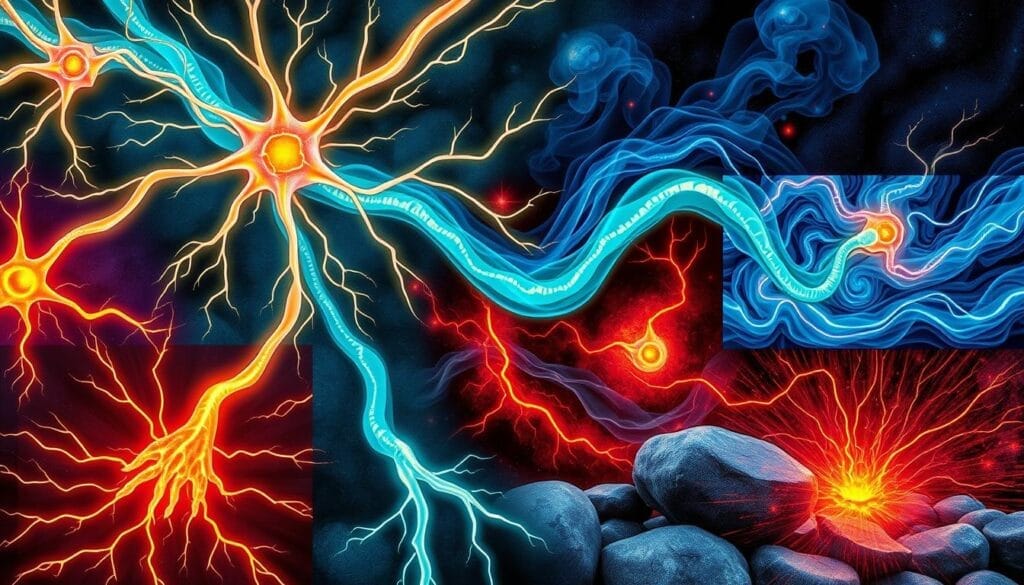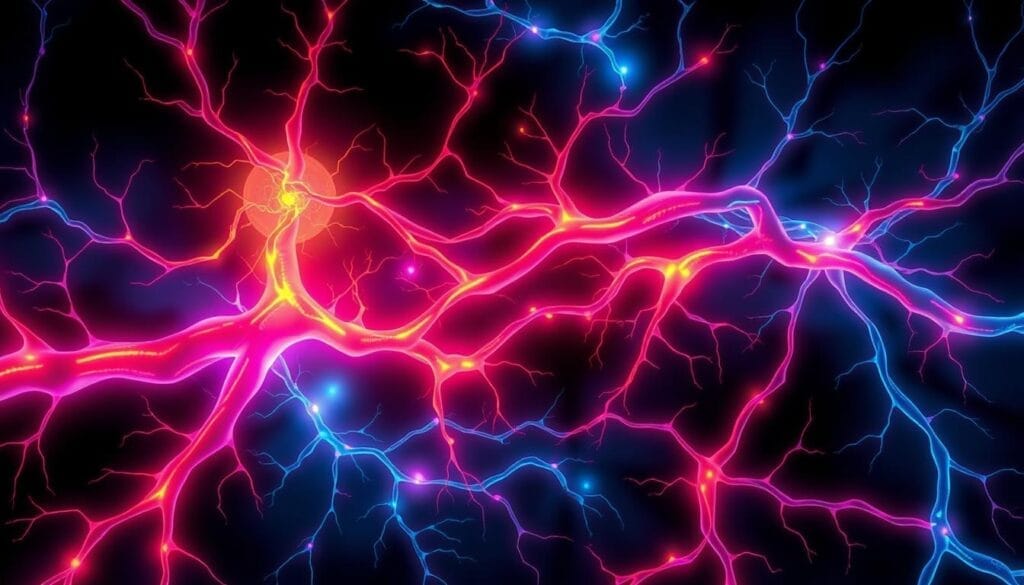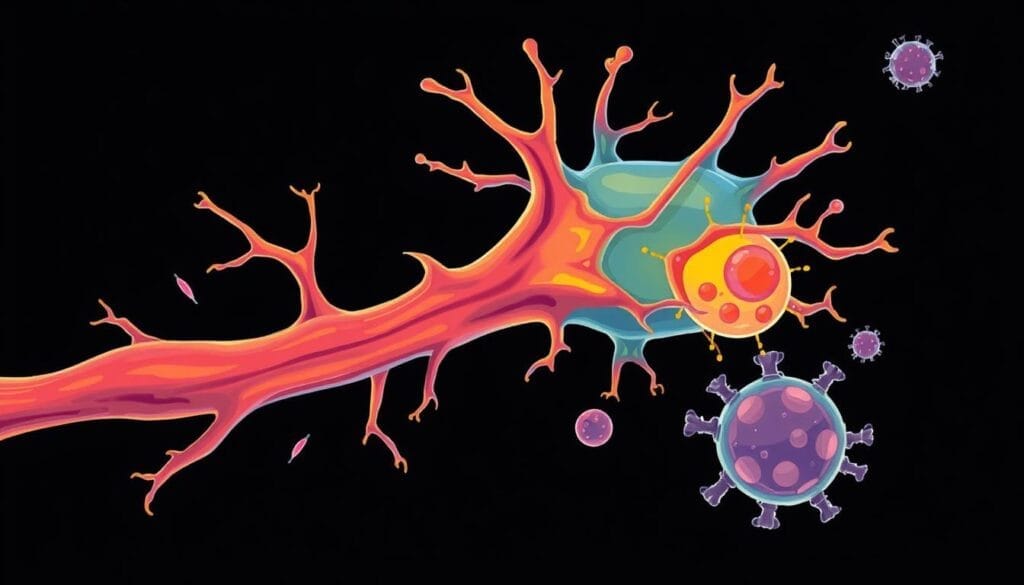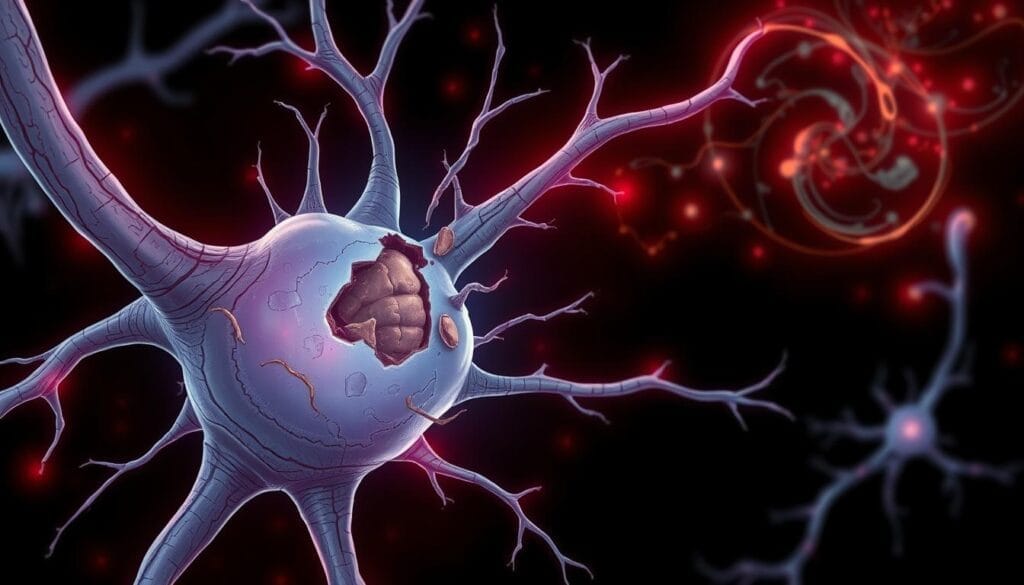Why does your pain never seem to go away, even after the injury heals? What if your own nerves
Have you ever wondered why some pain just doesn’t go away, even after the injury is long gone? That’s the puzzle many people face when dealing with chronic pain. It doesn’t fade like a normal cut or bruise. Instead, it lingers, day after day, affecting every part of life. For many, the reason behind this long-lasting pain is something deeper, nerve damage.
In this blog, we will explain what chronic pain is, how it connects to your nerves, and why understanding this connection is the first step to managing it. Let’s break it down simply and clearly.
Table of Contents
ToggleWhat is Chronic Pain and How is It Different from Acute Pain?
When it comes to pain, not all kinds are the same. It’s important to know the difference to understand how the body works.
How is chronic pain medically defined?
Chronic pain lasts longer than three months. It often stays even after your body has healed from the injury or illness.
- It doesn’t serve a protective role like short-term pain.
- It may continue even when there is no visible cause.
- It can interfere with daily activities and emotional health.
In short, chronic pain is when your body keeps hurting even when it doesn’t need to.
Why is chronic pain considered a condition, not just a symptom?
Doctors now know that chronic pain is not just a sign of another problem. It can become a problem by itself.
- It changes how your brain and nerves respond to pain.
- Over time, your body becomes more sensitive to pain signals.
- The CDC recognizes chronic pain as a health condition.
Stat Alert: According to the CDC (2023), 1 in 5 adults in the U.S. experiences chronic pain.
Common Causes of Chronic Pain
The main reasons for chronic pain are:
- Nerve damage or neuropathic pain
- Inflammation, like in arthritis or other inflammatory conditions
- Underlying medical conditions, such as cancer, diabetes, or fibromyalgia
Types of Chronic Pain
There are many types of chronic pain, each with its own features and causes:
- Nociceptive Pain: This pain comes from tissue damage or inflammation, like in arthritis or injuries.
- Neuropathic Pain: This pain is from nerve damage or problems, making pain feel stronger or different.
- Nociplastic Pain: This pain is from changes in how the central nervous system handles pain signals, making us more sensitive to pain.
It’s very important for doctors to know about these different types and causes of chronic pain. This helps them create better treatment plans. It also improves the lives of those dealing with this tough condition.

How Does Nerve Damage Occur and What Triggers It?
Sometimes, nerves get hurt. When that happens, they don’t work the same way.
What are the most common causes of nerve damage?
Nerves can be damaged by many things:
- Diabetes: High sugar levels damage nerves over time.
- Injuries or trauma: Like car accidents or falls.
- Infections: Shingles and HIV can damage nerves.
- Autoimmune diseases: Like lupus or multiple sclerosis.
- Chemotherapy: Cancer treatment can harm nerves.
- Lifestyle factors: Poor diet or too much alcohol.
Can nerve damage happen without injury?
Yes, some conditions hurt nerves quietly.
- Degenerative issues: Like arthritis or disc problems.
- Metabolic issues: Like thyroid or kidney disease.
Stat Alert: Over 50% of people with diabetes develop some form of nerve damage (American Diabetes Association).
How Does Nerve Damage Lead to Chronic Pain?
When nerves get damaged, they can send the wrong signals. That’s where the pain starts.
Why do damaged nerves cause long-lasting pain?
Your nerves can become confused after damage:
- They become overly active or fire without reason.
- They may see normal touch as pain (nerve signal misfires).
- This overreaction is called central sensitization.
That’s why you feel pain even when there’s no real injury.
What is neuropathic pain and how is it different?
Neuropathic pain is a type of chronic pain caused by damaged nerves. It feels different from regular pain:
- Burning or stabbing feelings.
- Tingling or numbness.
- Shock-like sensations.
This is not caused by inflammation but by damaged nerve fibers misfiring.
Research in The Journal of Neuroscience shows that long-term chronic pain can change how the brain processes pain, making it harder to shut off pain signals.

What Are the Most Common Conditions Where Nerve Damage Causes Chronic Pain?
Several health issues are linked directly to nerve-relatedpain.
How does diabetic neuropathy result in chronic pain?
- High blood sugar damages nerves over time.
- Most often affects legs and feet.
- Causes burning, sharp pain, and tingling and numbness.
What is postherpetic neuralgia and who is at risk?
- Happens after a shingles infection.
- Older adults are at higher risk.
- Can last months or years.
- Pain is deep and aching.
How do spinal cord injuries or herniated discs play a role?
- Damage to spinal nerves causes long-term chronic pain.
- Can lead to spinal cord pain pathways dysfunction.
- Often includes weakness or shooting pains in limbs.

How is Chronic Pain From Nerve Damage Diagnosed by Doctors?
Doctors need to figure out what’s causing your pain.
What tests and assessments are used?
- EMG (Electromyography): Tests muscle and nerve response.
- Nerve conduction studies: Check how fast signals move.
- MRI scans: Show damage in the brain or spine.
- Skin biopsy: Looks at small fiber nerve damage.
How do doctors distinguish neuropathic pain from other types?
- Use of pain description tools like PainDETECT or DN4.
- They ask if your pain feels like burning or stabbing.
- They check for signs of nerve inflammation or damage.
What Are the Available Treatments for Chronic Pain Due to Nerve Damage?
Managing nerve pain takes a full plan. Medicine is only one part.
What are the common medications used?
- Anticonvulsants: Calm nerve signals (like gabapentin).
- Antidepressants: Help nerves and mood.
- Topical creams: Numb the painful area.
- Opioids: Used only when needed.
How effective are non-drug therapies like physiotherapy and CBT?
- Physiotherapy: Keeps the body active and reduces stiffness.
- Cognitive Behavioral Therapy (CBT): Helps with the mental side of pain.
- Mind-body connection is strong inpain.
Can nerve blocks or spinal cord stimulation help?
- Nerve blocks: Stop pain signals at the root.
- Spinal cord stimulators: Use small electric signals to change how pain is felt.
Stat Alert: Only 58% of patients with neuropathic pain causes report relief with medicine alone (NIH).
Can Nerve Damage Be Prevented Before It Becomes Chronic Pain?
Yes, early care makes a big difference.
What preventive steps are recommended for high-risk individuals?
Changing your lifestyle can really help your nerves. Here are some tips:
- Eat a diet full of vitamins and minerals to keep your nerves healthy.
- Do some light exercise to help your nerves grow back.
- Try stress-reducing activities like meditation to protect your nerves.
- Stay away from harmful things like alcohol and cigarette smoke.
- Get enough sleep to help your nerves heal.
When Should You See a Doctor About Chronic Nerve Pain?
Ignoring nerve pain can make it worse. Know when to act.
Red flags that shouldn’t be ignored
- Pain that lasts over 3 months.
- Weakness, tingling and numbness.
- Trouble walking or holding things.
What questions should you ask your doctor about long-term pain?
- What is causing my pain?
- Are my nerves damaged?
- What are my options for nerve pain treatment?
Take Action Today for Chronic Nerve Pain
Chronic pain is real. It’s not in your head. And it deserves real solutions. If you’re struggling with long-term nerve pain, don’t wait. Early care can stop the pain from taking over your life.
Book a consultation with Dr. Chandril Chugh, a US-trained, board-certified neurologist. His experience in chronic pain diagnosis, nerve disorders, and modern treatments can help you find the relief you deserve.
FAQ
What is the connection between nerve damage and chronic pain?
Nerve damage can mess up how pain signals are sent. This can cause pain even after injuries heal. Understanding this link helps in finding better treatments for chronic pain.
What are the different types of chronic pain?
There are several types of chronic pain. Nociceptive pain helps protect us. Neuropathic pain comes from nerve damage. Inflammatory pain happens after tissue injury.
Dysfunctional pain is from nervous system problems without damage.
What are the common types of nerve damage?
Common nerve damage includes peripheral neuropathy, neuralgia, and radiculopathy. Symptoms include burning, numbness, tingling, and weakness. This damage can really affect daily life.
How does nerve damage lead to chronic pain?
Nerve damage changes how the nervous system works. This leads to constant pain and more sensitivity to pain. It creates a condition that makes pain harder to manage.
What is the role of inflammation in chronic pain development?
Inflammation is key in chronic pain. It makes pain signals stronger. Long-term inflammation can make pain worse by changing how we feel pain.
How is chronic pain and nerve damage diagnosed?
Diagnosing chronic pain and nerve damage needs a full check-up. This includes a medical history, physical exam, and tests like electromyography. Getting the right diagnosis is important for treatment.
What are the treatment options for chronic pain?
Treating chronic pain often involves many approaches. This includes medicines, physical therapy, and sometimes nerve blocks or surgery. Each plan is made for the person’s specific needs.
How can nerve damage be managed?
Managing nerve damage needs medical help and lifestyle changes. Starting treatment early is key. Changes like diet, exercise, and stress management can help. Managing other health issues is also important.
How does chronic pain impact mental health?
Chronic pain can really affect mental health. It can lead to depression and anxiety. Therapy, mindfulness, and stress reduction can help. Support groups offer emotional support and advice.
How can individuals living with chronic pain and nerve damage improve their quality of life?
Living well with chronic pain means having a strong support system. Setting realistic goals and finding ways to manage pain are important. While there’s no cure, many people can live fulfilling lives with the right support.
About The Author

This article is medically reviewed by Dr. Chandril Chugh, Board-Certified Neurologist, providing expert insights and reliable health information.
Dr. Chandril Chugh is a U.S.-trained neurologist with over a decade of experience. Known for his compassionate care, he specializes in treating neurological conditions such as migraines, epilepsy, and Parkinson’s disease. Dr. Chugh is highly regarded for his patient-centered approach and dedication to providing personalized care.
→ Book a consultation to discover which remedies suit your needs best.





